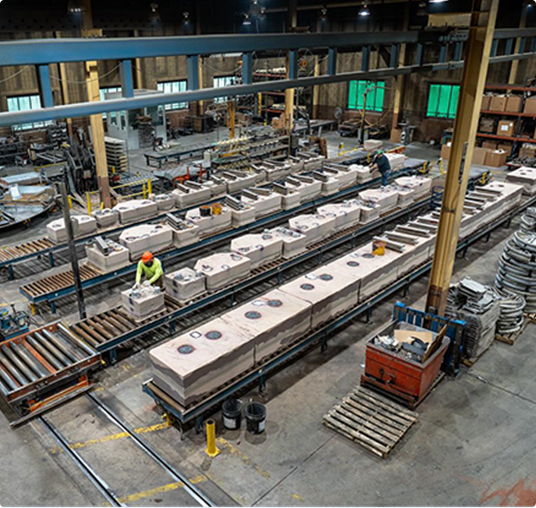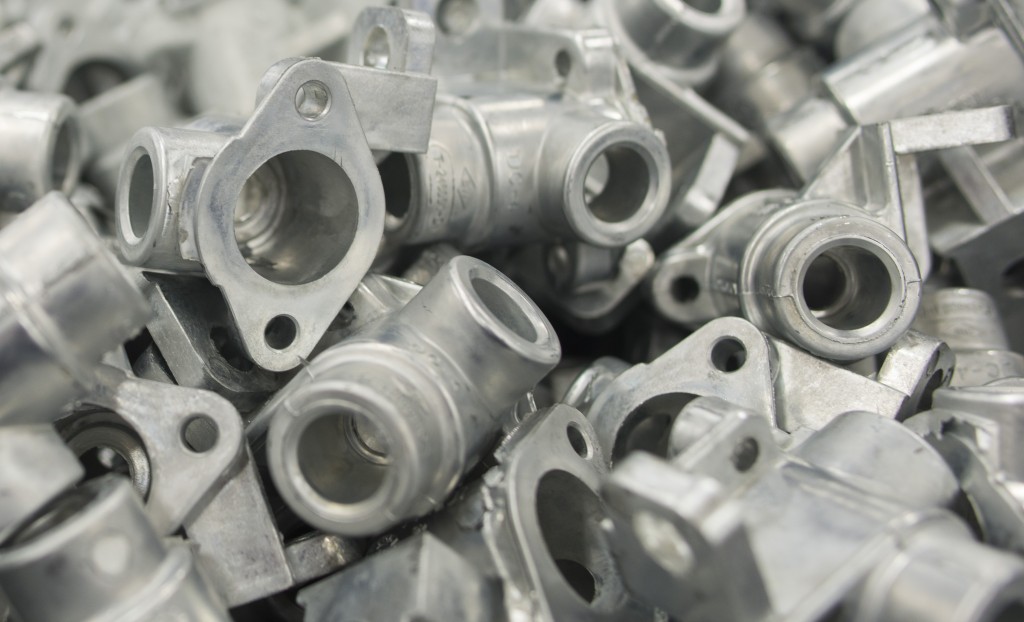The Many Uses Aluminum Castings: A Comprehensive Guide for Industry Professionals
Aluminum castings play an important function throughout different markets, thanks to their distinct properties. These lightweight and long lasting parts are essential in vehicle and aerospace applications. Comprehending their benefits and the manufacturing procedures included can substantially influence performance and performance. As technology advances, new developments remain to arise. Industry specialists need to consider these factors to make educated selections. The implications of these developments deserve checking out additionally.
Advantages of Light Weight Aluminum Castings in Various Industries
Aluminum castings use numerous advantages throughout numerous sectors, making them a favored choice for numerous applications. Among the main advantages is their lightweight nature, which adds to overall power performance in transport and equipment. This lowered weight likewise improves simplicity of taking care of and installation, causing reduced labor costs.
Aluminum castings show superb corrosion resistance, prolonging the lifespan of components in harsh settings. Their thermal and electric conductivity enables for effective warmth dissipation and reliable electrical applications.
Furthermore, light weight aluminum can be conveniently alloyed and controlled, allowing the development of complex shapes and styles that fulfill specific engineering demands. This convenience sustains innovation in markets such as vehicle, aerospace, and customer products.
Last but not least, the recyclability of aluminum aligns with lasting techniques, making it an eco-friendly option for contemporary manufacturing. In general, the advantages of light weight aluminum castings place them as necessary products in different fields.
Key Production Processes for Aluminum Castings
A range of producing procedures are utilized to produce light weight aluminum spreadings, each tailored to fulfill specific application demands and manufacturing volumes. Amongst the most common methods are sand spreading, pass away spreading, and investment spreading.

Financial investment spreading, likewise called lost-wax casting, offers outstanding surface area finishes and intricate details, commonly made use of for smaller, precision elements. Additionally, gravity casting makes use of the pressure of gravity to fill mold and mildews, suitable for larger spreadings where accuracy is much less crucial. Each process has its advantages, providing to diverse industrial demands while maximizing efficiency and high quality in aluminum spreading manufacturing.
Applications of Light Weight Aluminum Castings in Automotive and Aerospace
In countless applications within the auto and aerospace markets, aluminum spreadings play a crucial duty due to their light-weight residential properties and excellent strength-to-weight proportion. In the auto industry, components such as engine blocks, transmission cases, and wheel rims are usually created utilizing light weight aluminum castings. These parts profit from decreased weight, resulting in enhanced fuel effectiveness and boosted performance.
In aerospace, aluminum spreadings are important for structural components, including aircraft frames, touchdown gear, and engine housings. The product's resistance to corrosion and capability to endure high temperatures make it optimal for these requiring applications. In addition, light weight aluminum castings facilitate intricate geometries, making it possible for the design of elaborate parts that contribute to overall airplane performance.
Advancements and Innovations in Light Weight Aluminum Spreading Innovation
As sectors proceed to progress, technologies in aluminum spreading technology are driving considerable enhancements in efficiency and efficiency. Advanced techniques such as 3D printing and spreading simulation software application have changed typical methods, permitting for more accurate layouts and reduced waste. These modern technologies allow producers to produce intricate geometries that were formerly unattainable, improving the convenience of aluminum castings.
Furthermore, the development of new alloy make-ups and treatment approaches has boosted mechanical buildings, making spreadings lighter yet stronger. Automated procedures are additionally being incorporated, lessening human mistake and raising manufacturing rate.

Ideal Practices for Using and picking Light weight aluminum Castings
When picking and utilizing aluminum castings, mindful factor to consider of particular standards can substantially impact the final product's performance and durability. Industry experts ought to examine the certain application demands, directory including load-bearing abilities, deterioration resistance, and thermal conductivity. Choosing the suitable alloy is essential, as various alloys provide varying attributes and staminas.
Furthermore, understanding the spreading procedure-- whether sand spreading, pass away spreading, or financial investment spreading-- will certainly affect the end product's quality and cost-effectiveness. Quality control steps, such as non-destructive testing and dimensional assessments, are vital to assure that the castings fulfill industry requirements.
Additionally, proper handling and storage of aluminum spreadings can prevent damage, guaranteeing peak performance. Working together with credible distributors that focus on top quality control can improve the dependability of the ended up elements. By adhering to these finest methods, sector specialists can make the most of the advantages of aluminum castings in their applications.
Frequently Asked Inquiries
What Are the Environmental Influences of Light Weight Aluminum Spreading Production?
Aluminum spreading manufacturing can lead to considerable environmental influences, consisting of greenhouse gas emissions, power consumption, and source depletion. Additionally, inappropriate waste administration may cause soil and water contamination, affecting local communities and areas.
Exactly How Do Aluminum Castings Contrast to Other Metal Spreadings?
Aluminum castings are lighter and corrosion-resistant compared to other metal spreadings like iron or steel. They use superior thermal and electrical conductivity, making them excellent look what i found for applications where weight and sturdiness are critical aspects.
What Is the Cost Difference In Between Aluminum and Various Other Products?
The cost of aluminum castings typically varies from modest to high, usually extra cost effective than stainless-steel but pricier than some plastic alternatives. Metal Castings. Elements such as manufacturing intricacy, material, and volume specs significantly affect total rates
Can Aluminum Castings Be Reused?
Aluminum castings can indeed be reused. This procedure significantly decreases power usage and environmental influence contrasted to creating new light weight aluminum, making recycling an essential practice in promoting sustainability and resource preservation within various markets.
What Safety and security Steps Should Be Taken Throughout Aluminum Casting Processes?
Throughout light weight aluminum casting processes, crucial precaution consist of wearing safety gear, ensuring proper ventilation, utilizing heat-resistant tools, maintaining equipment, and following safety and security methods to avoid direct exposure to dangerous materials and minimize the threat of accidents. (Wisconsin Aluminum Foundry)
Sand spreading involves developing a mold and mildew from sand, enabling for huge castings and complex shapes. Investment spreading, also recognized as lost-wax casting, supplies extraordinary surface finishes and complex details, commonly utilized for smaller sized, precision components. Furthermore, gravity spreading utilizes the force of gravity to load molds, suitable for larger castings where precision is much less crucial. In addition, understanding the spreading Bonuses procedure-- whether sand spreading, pass away casting, or financial investment casting-- will certainly affect the final item's high quality and cost-effectiveness. Aluminum castings are lighter and corrosion-resistant contrasted to other metal spreadings like iron or steel.